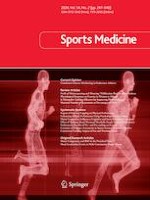Published in:

22-09-2023 | Systematic Review
The Additional Effect of Training Above the Maximal Metabolic Steady State on VO2peak, Wpeak and Time-Trial Performance in Endurance-Trained Athletes: A Systematic Review, Meta-analysis, and Reality Check
Authors:
Michael A. Rosenblat, Jem Arnold, Hannah Nelson, Jennifer Watt, Stephen Seiler
Published in:
Sports Medicine
|
Issue 2/2024
Login to get access
Abstract
Background
To improve sport performance, athletes use training regimens that include exercise below and above the maximal metabolic steady state (MMSS).
Objective
The objective of this review was to determine the additional effect of training above MMSS on VO2peak, Wpeak and time-trial (TT) performance in endurance-trained athletes.
Methods
Studies were included in the review if they (i) were published in academic journals, (ii) were in English, (iii) were prospective, (iv) included trained participants, (v) had an intervention group that contained training above and below MMSS, (vi) had a comparator group that only performed training below MMSS, and (vii) reported results for VO2peak, Wpeak, or TT performance. Medline and SPORTDiscus were searched from inception until February 23, 2023.
Results
Fourteen studies that ranged from 2 to 12 weeks were included in the review. There were 171 recreational and 128 competitive endurance athletes. The mean age and VO2peak of participants ranged from 15 to 43 years and 38 to 68 mL·kg−1·min−1, respectively. The inclusion of training above MMSS led to a 2.5 mL·kg−1·min−1 (95% CI 1.4–3.6; p < 0.01; I2 = 0%) greater improvement in VO2peak. A minimum of 81 participants per group would be required to obtain sufficient power to determine a significant effect (SMD 0.44) for VO2peak. No intensity-specific effect was observed for Wpeak or TT performance, in part due to a smaller sample size.
Conclusion
A single training meso-cycle that includes training above MMSS can improve VO2peak in endurance-trained athletes more than training only below MMSS. However, we do not have sufficient evidence to conclude that concurrent adaptation occurs for Wpeak or TT performance.





